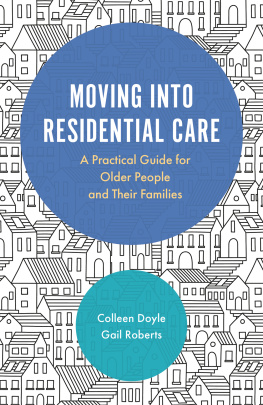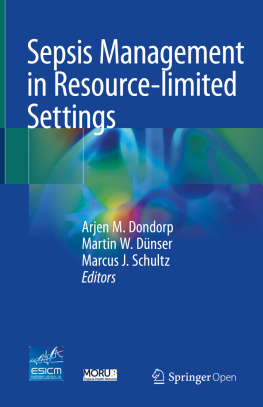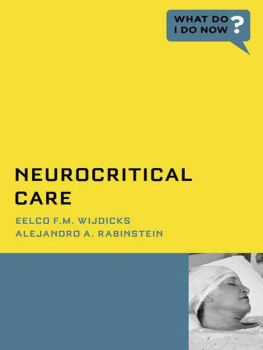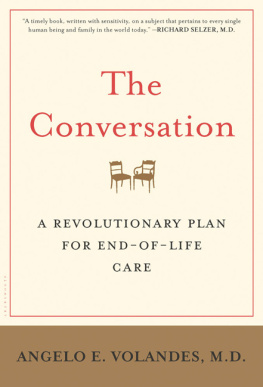Dr. Lara Goitein is a Harvard-trained physician specializing in pulmonary and critical care medicine who has worked as a doctor in intensive care units for 12 years. Currently she is President-Elect of Medical Staff at Christus St. Vincent Regional Medical Center in Santa Fe, New Mexico, and founding medical director of a hospital quality program called Clinician-Directed Performance Improvement. She is on the editorial board and is a frequent writer for the medical journal JAMA Internal Medicine, and is a reviewer for its series Physician Work Environment and Well-Being. Dr. Goitein also writes for the lay press, including an article in the New York Review of Books called, Training Young Doctors: The Current Crisis. Her professional interests include measuring and improving healthcare quality, physicians professional well-being, graduate medical education, the effects of the financial environment on the teaching and practice of medicine, and care at the end of life. She is a graduate of the Intermountain Advanced Training Program in Healthcare Delivery Improvement. Dr. Goiteins work in quality improvement at Chris-tus St. Vincent Regional Medical Center has received national attention: she was a speaker at the IHI/NPSF Patient Safety Congress in Boston in May of 2018, and recently wrote an article about the quality improvement program she directed in Health Affairs. Right now, Dr. Goitein is taking a break from clinical practice, and is home with her two sons while they do online school, in Santa Fe, New Mexico.
I would like to thank my three readers for their generous gifts of time and insight. Im profoundly grateful to my brother-in-law, Jerry Hauser. His thoughtfulness and ability to empathize with imagined family members in the ICU, no doubt sharpened by his own recent experiences, were invaluable. My colleague Dr. Susan Pasnick once again proved herself one of the smartest and most knowledgeable ICU doctors I know it is immeasurably reassuring to have had her expert eyes on this project. And last but not least, my mother, Dr. Marcia Angell, brought the same elegance, heart, intelligence, and perfect grammar with which she has edited my writing since I was five years old. Not everyone is lucky enough to have an editor-in-chief of the New England Journal of Medicine as a mother, and Marcia Angell, at that. I would like to thank my many mentors and teachers of ICU medicine, including Dr. Taylor Thompson, Dr. Mark Tonelli, Dr. Gordon Rubenfeld, Dr. J. Randall Curtis, and Dr. Leonard Hudson. It is amazing to see that the most interesting things being written about ICU medicine are now being written by the kids with whom I trained, including Dr. Jeremy Kahn and Dr. Catherine Lee (Terri) Hough now they are my teachers, too. I greatly appreciate the tutelage of Ms. Wanda Jiron in issues pertaining to hospital billing. I would like to thank my wise agent, Ms. Alice Martell, and my publishing editor Ms. Suzanne Staszak-Silva. Finally, thanks to my husband, Tom Burdick. He is also a doctor, and contributed his intelligence and experience to these pages during many conversations at the dinner table. He helped me to carve out the time for this project with his typical warm generosity, good humor, and enthusiasm.
Use the table on the next page as a guide to questions for nurses and doctors that may help to prevent typical complications of ICU care.
|
|---|
| Date:________ Name of ICU Nurse:__________________ |
|---|
| Name of ICU Doctor:____________________ |
|---|
| QUESTIONS | NOTES |
Are there any lines or tubes that can come out today? (If not, what specifically are the indications to continue?) - Endotracheal tube
- Central line or PICC
- Urinary catheter
- Chest tube
|
If on a ventilator:
Did the patient have a spontaneous breathing trial this morning? (If not, what were the specific contraindications?) |
If on sedative medications:- Did the patient have a sedation vacation this morning? (If not, what were the specific contraindications?) Did he wake up, and how was he?
- If too sleepy to sustain eye-contact. Would it be possible to lighten sedation at all?
|
What are the plans for mobility today? Examples: - Regular turning
- Sitting upright (how long?)
- Passive range of motion
- Active range of motion
- Out of bed to a chair (how long?)
- Standing or walking
|
Could I help you today with: - Supervising patient during lighter sedation
- Assisting with mobility/exercise
- Swabbing patients mouth
|
Medications: - Have any new medications been started? If so, what are the possible side effects?
- Is the patient on gastric acid suppression? If so, could sucralfate be used instead?
- Are there any antibiotics that could be stopped or changed to narrower spectrum antibiotics today?
|
Nutrition: - Is the patient receiving tube feeds? If so, is he at goal?
|
Afdhal, Nezam H. Acalculous cholecystitis: Clinical manifestations, diagnosis, and management. UpToDate. Accessed February 20, 2021. https://www.uptodate.com/contents/acalculous-cholecystitis-clinical-manifestations-diagnosis-and-management.
Alper, Eric, Terrence A. OMalley, and Jeffrey Greenwald. Hospital discharge and readmission. UpToDate. Accessed February 20, 2021. https://www.uptodate.com/contents/hospital-discharge-and-readmission.
Altman, Marcus, Melissa P. Knauert, and Margaret A. Pisani. Sleep disturbance after hospitalization and critical illness: A systematic review. Annals of the American Thoracic Society 14, no. 9 (September 2017): 14571468.
Andersen, Lars W., Mathias J. Holmberg, Katherine M. Berg, Michael W. Donnino, and Asger Granfeldt. In-hospital cardiac arrest: A review. Journal of the American Medical Association 321, no. 12 (March 2019): 12001210.
Anderson, Deverick J., and Daniel J. Sexton. Overview of control measures for prevention of surgical site infection in adults. UpToDate. Accessed February 20, 2021. https://www.uptodate.com/contents/overview-of-control-measures-for-prevention-of-surgical-site-infection-in-adults.
Anderson, H. Vernon, Richard E. Shaw, Ralph G. Brindis, Kathleen Hewitt, Ronald J. Krone, Peter C. Block, Charles R. McKay, and William S. Weintraub. A contemporary overview of percutaneous coronary interventions: The American College of Cardiology-National Cardiovascular Data Registry (ACC-NCDR). Journal of the American College of Cardiology 39, no. 7 (April 2002): 10961103.
Anesi, George L. Coronavirus disease 2019 (COVID-19): Critical care and airway management issues. UpToDate. Accessed February 14, 2021. https://www.uptodate.com/contents/coronavirus-disease-2019-covid-19-critical-care-and-airway-management-issues.
Angus, Derek C., Amber E. Barnato, Walter T. Linde-Zwirble, Lisa A. Weissfeld, R. Scott Watson, Tim Rickert, and Gordon D. Rubenfeld. Use of intensive care at the end of life in the United States: An epidemiologic study. Critical Care Medicine 32, no. 3 (March 2004): 638643.
Auld, Sara C., Mark Caridi-Scheible, James M. Blum, Chad Robichaux, Colleen Kraft, Jesse T. Jacob, Craig S. Jabaley et al. ICU and ventilator mortality among critically ill adults with coronavirus disease 2019. Critical Care Medicine 48, no. 9 (September 2020): e799e804.
Azoulay, Elie, Frederic Pochard, Nancy Kentish-Barnes, Sylvie Chevret, Jerome Aboab, Christophe Adrie, Djilali Annane et al. Risk of post-traumatic stress symptoms in family members of intensive care unit patients.







